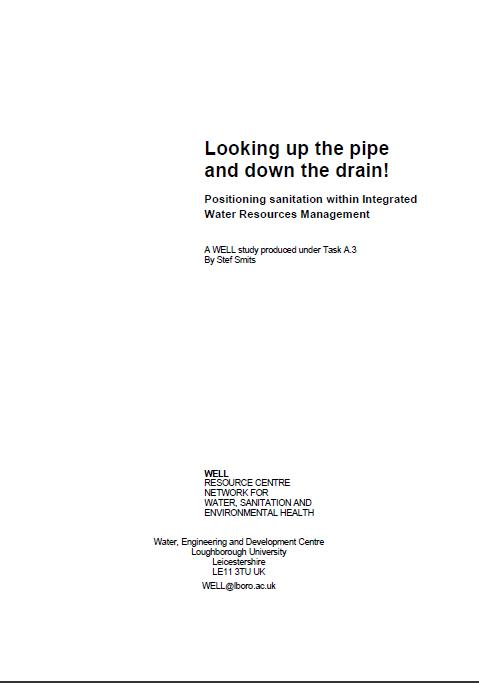Looking up the pipe and down the drain - Positioning sanitation within Integrated Water Resources Management
Smits, S. (2005)

Published in: 2005
Publisher:
WELL
Author:
Smits, S.
Uploaded by:
SuSanA secretariat
Partner profile:
common upload
3946 Views
10 Downloads
Content - Summary
Sanitation aims to reduce pathogen transmission risks originating from human waste. Much of the effort therefore goes into providing people with safe and private sanitation facilities at the household level. However, little attention is given to what happens with the waste afterwards, as it goes down the drain, such as pollution through seepage from pit latrines or disposal of wastewater. Nor are many people concerned with the impacts and requirements sanitation may pose upon water resources, for example the need to flush. With the realisation that sanitation has impacts on the water cycle, and hence on the availability of water as a resource for other (competing) uses, water resources managers are increasingly being pre-occupied with sanitation, especially in the context of Integrated Water Resources Management (IWRM). Water supply and sanitation professionals therefore need to start considering the position of sanitation in the water resource cycle.
This paper elaborates the various linkages between different sanitation options and water resources. In addition, it drafts two principal ways in which the management of these linkages can be carried out. Firstly, the authorities responsible for sanitation (often local governments) need to engage with water resource management institutions which are currently being established in many countries. Secondly, principles of IWRM can be more consistently applied in the sanitation sector. A number of organisations have turned IWRM principles into more practical guidelines which can be applied to sanitation. These approaches are not mutually exclusive; in fact they need to reinforce each other in order to position sanitation more effectively into IWRM initiatives.
Bibliographic information
Smits, S. (2005). Looking up the pipe and down the drain - Positioning sanitation within Integrated Water Resources Management. WELL
Filter tags
English















